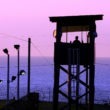In the months following 9/11, it seems Washington just couldn’t say “no” to the CIA. The agency’s budget shot through the ceiling. Suddenly the CIA not only commanded private armies, it even had a state-of-the-art air force! Between 2006-2007, the CIA drove a proxy war, mobilizing Ethiopia’s army to invade Somalia. It was perhaps the most audacious war the CIA ever triggered. But it hardly raised a stir in Washington, where reinvigorated secrecy ensured that hardly anyone knew about it—and where to this day few analysts even understand what the CIA’s little war, in which thousands of innocent civilians perished, was about. The CIA also bore core responsibility for a nine-year-long drone war in Pakistan: 300 strikes with more than 3,000 fatalities, almost all of this in an area that U.S. military strategists describe as the core of the battlefield in the current war. It also ran, jointly with the military, drone campaigns in Yemen and Somalia. None of this is what the authors of the National Security Act had in mind with the words “covert operation.” In fact, virtually the only people in the world from whom these activities were kept secret were American voters.
Throughout this period, the dapper and good-natured John Rizzo was the CIA’s senior career lawyer. One would hope to find in his memoir a deep account of the policy battles that led to the CIA’s transformation, and particularly the legal issues. There is no other time in American history when the public has been riveted by legal policy issues as luridly appealing as those that emerged in 2004-2007. Gruesome accounts of homicide and torture in secret prisons run by the American government rocked the world. The scandal opened with now-iconic photographs from Abu Ghraib, and spread as stories emerged from Bagram, Camp Nama, the CIA’s Salt Pit prison north of Kabul, its secret prison near Rabat, Morocco, and Guantánamo. President Bush insisted that “we do not torture.” But an avalanche of secret U.S. legal documents quickly showed otherwise.
 John Rizzo was at the center of this storm.
John Rizzo was at the center of this storm.
Company Man offers an interesting collection of vignettes from a 35-year career in the agency, but its essence is a rationalization of the CIA’s decision to operate black sites and use torture. Rizzo chronicles the steps that led to these decisions and then to back away from them. We discover, for instance, as John Kiriakou first revealed, that the key decisions about the use of waterboarding, mock burial, the cold cell, longtime-standing, sleep deprivation and similar techniques, were taken by the CIA both to the Justice Department’s Office of Legal Counsel (OLC) and to the White House. They were ultimately reviewed and approved by the National Security Council (NSC) Principals Committee (consisting of key cabinet officers, the national security advisor, the president and vice president). Only two members of the NSC openly voiced reservations: Condoleezza Rice didn’t like enforced nudity. Colin Powell objected to sleep deprivation. (Kiriakou, a former CIA case officer and analyst, is currently serving a prison term for what he revealed.)
Donald Rumsfeld, who once stormed out of a party when asked about war crimes, didn’t want to be in these meetings. John Ashcroft was “mostly silent.” But Dick Cheney stood tall for torture and was a forceful dissenter from President Bush’s late 2006 decision to eliminate it. One curiosity: in his recent biography, Bush proudly took responsibility for the use of the “enhanced interrogation techniques,” but Rizzo doesn’t recall that Bush was ever actually briefed on them.
Rizzo makes clear that going into this process he had one key worry. It was never whether the techniques were legal or moral. Rather it was how he could protect CIA personnel from the risk of prosecution at some point in the future. The strategy he developed to accomplish this reveals Rizzo as a consummate Beltway insider. By involving the White House at the highest level in the decision, he ensured that accountability would, if pursued, have to reach to the very top of the government. Federal prosecutors would of course find it impossible to open a criminal inquiry into the entire National Security Council, particularly with the attorney general personally blessing the whole process. And by securing opinions from OLC, Rizzo was effectively securing a get-out-of-jail-free card for his team—ensuring that no one at Justice would dare bring charges against them. We see how well this strategy worked later on, when Attorney General Eric Holder appointed a special prosecutor to examine a number of cases flagged by a CIA inspector general. The evidence was copious, but the prosecutor declined to press charges in any of the 101 cases, including those involving homicide. Any other decision would have led to the top. All the way to the top.
Company Man offers an interesting collection of vignettes from a 35-year career in the agency, but its essence is a rationalization of the CIA’s decision to operate black sites and use torture.
Historians looking at Rizzo’s account will have to exercise caution on some elements. His style, often simple and frank, becomes bitter, defensive and occasionally downright deceptive when torture techniques are on the table. Rizzo is unstinting in his testimonials to everyone up his chain of command, but has a noticeable disdain for anyone who talks about “torture.” Hence, John McCain “gave me serious pause about his temperament,” Ron Wyden was “a foe who could not be appeased,” Dianne Feinstein was “not courteous,” and Rizzo can muster only contempt for the ACLU, human rights groups, journalists, U.N. rapporteurs and “academic dilettantes” who “write with indignation” about torture and deaths in CIA detention camps.
According to Rizzo “every, and I mean every” CIA employee involved in these programs “believed in it wholeheartedly and unswervingly.” Given the self-selective nature of the programs, it’s hardly surprising that those involved in them would persuade themselves of benefits, but the appearance of books and articles by participants who believe the programs were corrupt, immoral and ineffective (CIA agents Glenn Carle and Sabrina de Sousa, to cite two) suggest Rizzo’s inability to take a head count.
Rizzo insists that the CIA “wanted no part of torture” which it had “never countenanced, much less facilitated.” He justifies this by claiming that waterboarding a prisoner more than a hundred times, putting a prisoner with a fear of insects in a box with insects, staging a mock burial, extended sleep deprivation, hypothermia and repeated combinations of these techniques never raised a serious question of torture—because Rizzo had an OLC opinion to the contrary in his pocket. The fact that the authors of that opinion knew nothing on the subject, that they had been promised judicial appointments and promotions for issuing it, that for the 50 years before and the eight years after these decisions, the Justice Department was very clear that these techniques were either torture or cruel, inhuman and degrading treatment not permitted by U.S. law—all that is ignored. Rizzo similarly sidesteps the CIA’s now notorious proxy-detention regimes set up in Morocco, Libya, Somalia and Egypt, where torture still more gruesome was practiced. Rizzo’s penchant for wordplay starts from the first pages of the book. Being called before a grand jury or congressional oversight panel to answer questions about the black site program is “torture.” On the other hand, waterboarding someone more than a hundred times is just an “enhanced interrogation technique,” and it is apparently insulting to the CIA as an institution to call it “torture.”
The most surprising aspect of Rizzo’s book is just how easy it is to be a CIA lawyer. Are CIA agents violating the law of a foreign nation? “We rather expect they do, all the time,” he tells one audience. No need even to worry about it. Violations of foreign treaties and covenants? Rizzo seems to believe that if the CIA should worry about it, the State Department or Justice Department will tell them. If there’s a question, ask them for guidance or an opinion. Why fret about it? Instead, we learn that the CIA lawyer’s lot really focuses heavily on domestic law, especially federal rules concerning the use of appropriated funds, specific congressional limitations on operations, and the art of drafting national security findings. A prisoner being tortured to death in Afghanistan is not really his worry—the DOJ will handle that, or more likely, bury it. But a senior CIA agent destroying tapes that are sought in a pending court case—now that’s a nightmare.
Rizzo supposes that nothing much of consequence to him happens outside the Beltway. The problem with disclosure of the use of torture techniques, the operation of black sites, the sweeping use of drones are all problems within the American political and legal system—public ire, congressional hearings, budget challenges, pressure to discipline employees, confirmation battles. There hardly even seems to be a world beyond the Beltway. But this points to the amazing shortsightedness of this book and the world it portrays.
In Italy, a court in Milan convicts 26 CIA agents and persons working with them for kidnapping, over their “snatch” operation targeting an Egyptian cleric who was already the subject of an Italian criminal justice probe. Their prisoner was whisked away, using a U.S. Air Force Base, to Egypt, where he was tortured through a CIA proxy-detention program. The convictions are sustained on appeal, even as the U.S. attempts to protect the CIA’s station chief in Rome with a claim of diplomatic immunity.
In Poland, criminal probes continue to identify CIA agents who set up a black site at a villa in Stare Kiejkuty, in the lake district three hours north of Warsaw, a CIA outpost that Rizzo once visited. Arrest warrants are issued for the CIA personnel involved, criminal charges are opened against their Polish collaborators.
Across the frontier, in Lithuania, another CIA black site is exposed and investigated by civil-rights activists. In February a court in Vilnius issued a mandate to the prosecutors to open a criminal probe of torture that may have occurred in that black site.
In Strasbourg, Europe’s highest court found an innocent German greengrocer had been abducted and tortured by the CIA in Macedonia in a case of mistaken identity. The court cited and chided the Macedonian authorities for failing to open a criminal probe and pursue the perpetrators—now high-ranking CIA officials, including the head of the agency’s counterterrorism center.
The prosecutors in all these cases, and in other cases pending in Spain, the U.K. and Australia, trade notes tracking the CIA personnel involved, their pseudonyms, their use of credit cards, frequent-flyer accounts and other data in the expectation of some day making arrests. This leaves the agency personnel unable to leave the United States, facing potentially heavy jail terms—and all at the hands of core U.S. allies who enthusiastically supported the war on terror and previously worked closely with the CIA.
All these developments flow from John Rizzo’s legal advice at the CIA, but you will strain to find the most fleeting mention of them in his book. If this book does give us a glimpse into the mind of the CIA lawyer, what it reveals is a capacity for self denial and willingness to ignore inconvenient truths that indeed define John Rizzo as a “company man.”
Scott Horton is a fellow at The Nation Institute and a contributing editor at Harper’s.






0 Comments